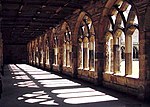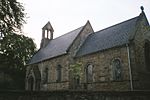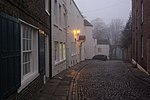Durham College (17th century)
1657 establishments in England1660 disestablishmentsDefunct universities and colleges in EnglandEducation in County DurhamEducational institutions established in the 17th century

Durham College, or New College, Durham, was a university institution set up by Oliver Cromwell, to provide an alternative to (and break the effective monopoly of) the older University of Oxford and University of Cambridge. It also had the aim of bringing university education to Northern England. It received letters patent - though not degree-awarding powers - in 1656, but after Cromwell's death in 1659 the universities of Oxford and Cambridge petitioned his son Richard Cromwell against the new university, and the college ceased to exist with the restoration of the monarchy in 1660.
Excerpt from the Wikipedia article Durham College (17th century) (License: CC BY-SA 3.0, Authors, Images).Durham College (17th century)
The College, Durham Viaduct
Geographical coordinates (GPS) Address Nearby Places Show on map
Geographical coordinates (GPS)
| Latitude | Longitude |
|---|---|
| N 54.772314 ° | E -1.5767 ° |
Address
Priors Hall
The College
DH1 3EQ Durham, Viaduct
England, United Kingdom
Open on Google Maps










